Amazing Machu Picchu! It’s one of the New Seven Wonders of the World and a World Heritage Listed Site. It sits high on the top of a mountain at 2,430 meters (8,000 feet). It’s a fascinating complex of ancient Inca ruins and on every traveler’s bucket list. Or is it? If you’re looking for some unique Machu Picchu alternatives, you’ve come to the right place!
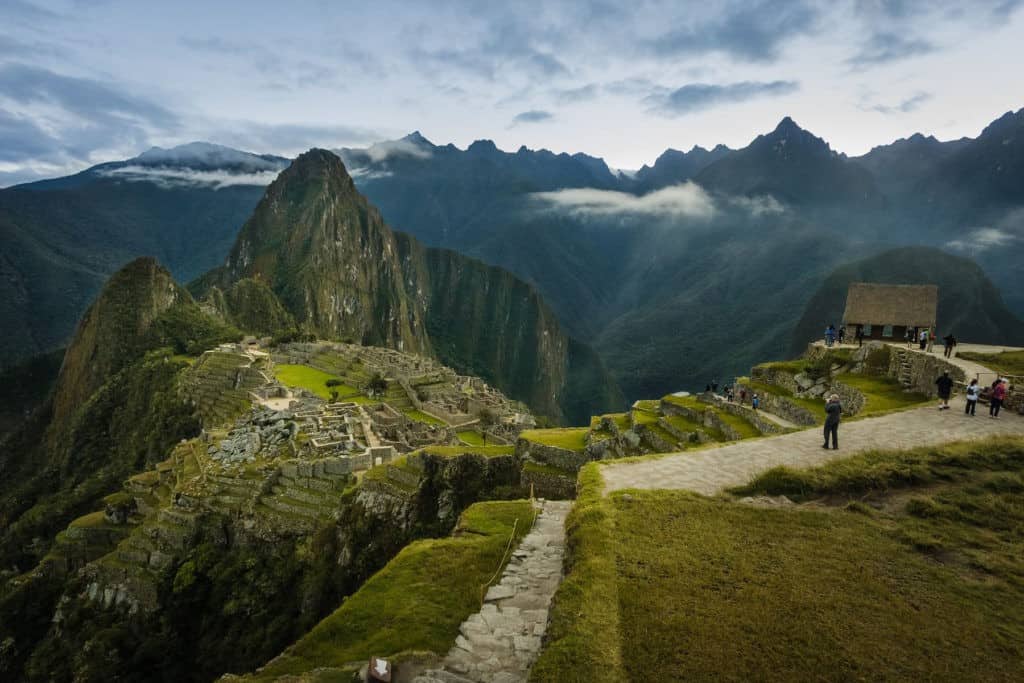
Why Consider an Alternative to Machu Picchu?
Machu Picchu is indeed spectacular. However, because it is the most visited destination in Peru it is also always very busy, with more than 2,500 visitors every day of the year. Don’t despair if these numbers do not fit your vision for your trip to Peru!
Maybe you don’t want to deal with the crowds or you are unable to travel to Machu Picchu on the dates that fit your schedule. You might prefer a more tranquil experience where you can explore the sites at your leisure. Or are you traveling on a budget and looking for a more cost-effective option?
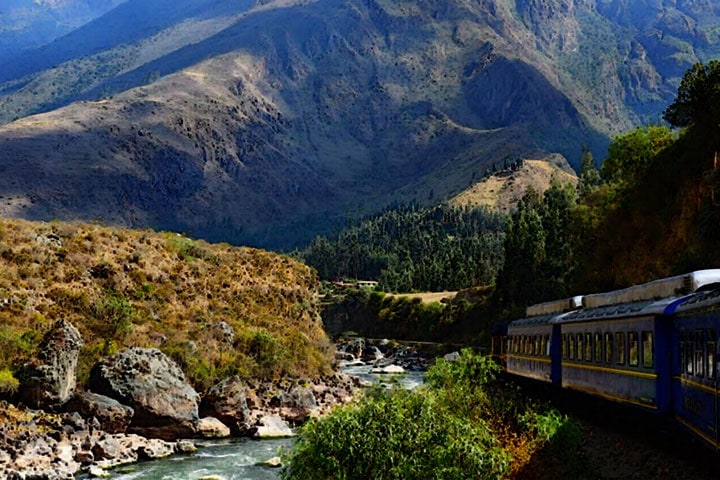
2-day Cusco to Machu Picchu train trip
All-inclusive train to Machu Picchu including a Sacred Valley tour. Best option for private tour; customize to suit your itinerary.
The great news is that there are some absolutely amazing alternatives to Machu Picchu for you to consider. Take a look at these alternative Inca ruins that will blow your mind!
Choquequirao – A Real Machu Picchu Alternative in the Heart of Cusco
Choquequirao is Machu Picchu’s “sister city” and is considered by many to be the best Machu Picchu alternative. Built around the same time as its more famous sister, the ruins at Choquequirao are perched above the Apurimac canyon, 3050 meters above sea level. Though they are still not entirely excavated, the Choquequirao ruins are estimated to be about three times the size of Machu Picchu, with a similar feeling of grandeur and NO crowds!
There are usually only about 20 visitors per day at Choquequirao as compared to the 2,500 per day at Machu Picchu and so the ruins are in a more pristine condition and quiet! Much quieter!
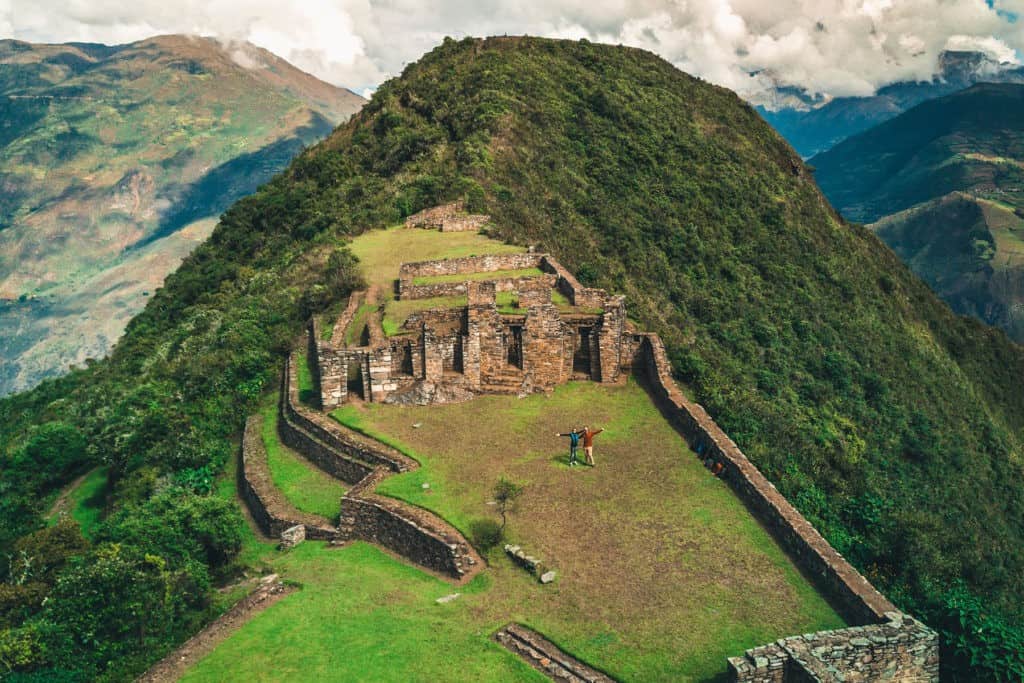
Machu Picchu vs Choquequirao
If you’re comparing Machu Picchu vs Choquequirao, the latter wins, hands-down. There’s just one catch: you have to hike there. That’s right, currently the only way to access Choquequirao is by a challenging 4-day trek that is considered the toughest trek in the region. It requires a good level of fitness and some past trekking experience but it is extremely rewarding. If budget is a priority, the Choquequirao trek is a less expensive alternative Inca trail trek, too.
However, we don’t know how much longer Choquequirao will be as remote as this, as the Peruvian government has plans to construct a cable car to ferry tourists directly to the ruins. So if this is a trek that inspires you, do it now before the crowds start arriving on that cable car!
One more thing: you don’t have to choose between Machu Picchu and Choquequirao if you are up for an epic hike through the mountains. Our signature 9-day Choquequirao to Machu Picchu hike lets you retrace the footsteps of the Incas and see both amazing Inca sites!
Overview Choquequirao vs Machu Picchu
| Choquequirao | Machu Picchu |
| Large, impressive Inca ruins | Smaller, impressive Inca ruins |
| Less well-known | Very famous |
| 20 visitors per day | 2500 visitors per day |
| Only accessible via a 4-day hike | Accessible by train or by hike |
| Challenging trek | Moderate trekking options |
| Name means “Cradle of Gold” | Name means “Old Peak” |
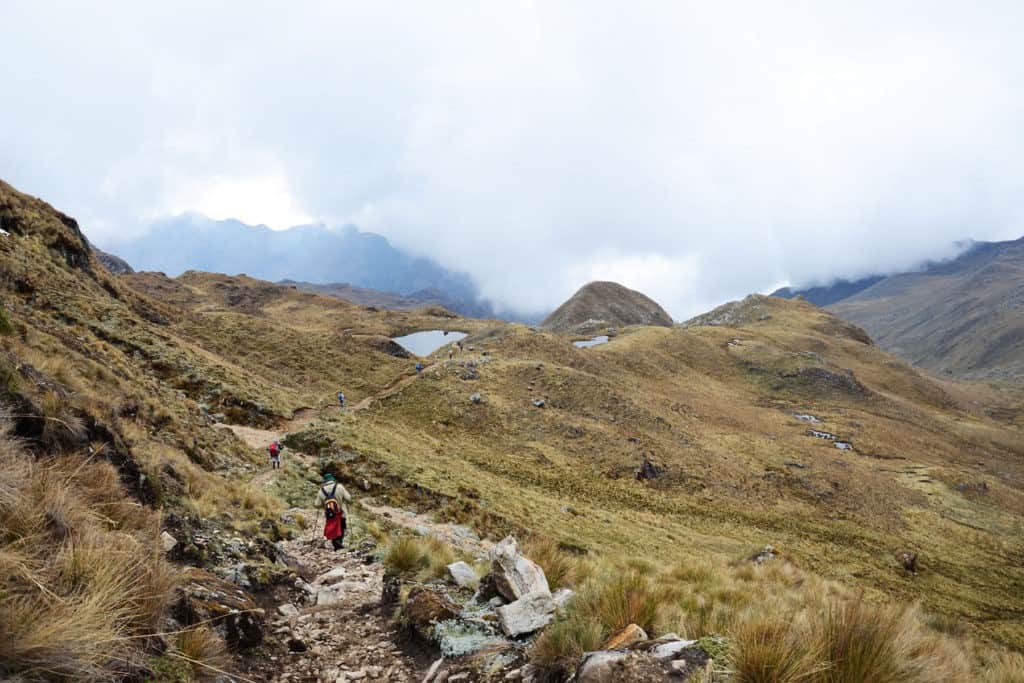
Vilcabamba / Espiritu Pampa: The Lost City of The Incas
Just beyond Choquequirao is Vilcabamba, home to the Lost City of the Incas, Espiritu Pampa. Once home to Tupac Amaru I, Espiritu Pampa (“spirit valley” in English) was the last refuge of the Incas, where they hid from the Spanish conquerors in the 16th century.
It was then abandoned and forgotten for centuries and has only been cleared in recent decades.
The Espiritu Pampa ruins are not as large or well-excavated as Machu Picchu but they are nevertheless rewarding. You’ll find this a truly off-the-beaten-path Machu Picchu alternative trek along a magnificent trail, culminating in an exploration of some less touristic ruins.
Vilcabamba is for the real Indiana Joneses out there, hearty adventurers looking for an epic journey. You’ll be retracing the footsteps of the Incas on our Choquequirao to Vilcabamba hike – you can’t beat that for an alternative trek to Machu Picchu.
Amazing Machu Picchu Alternatives Around Peru
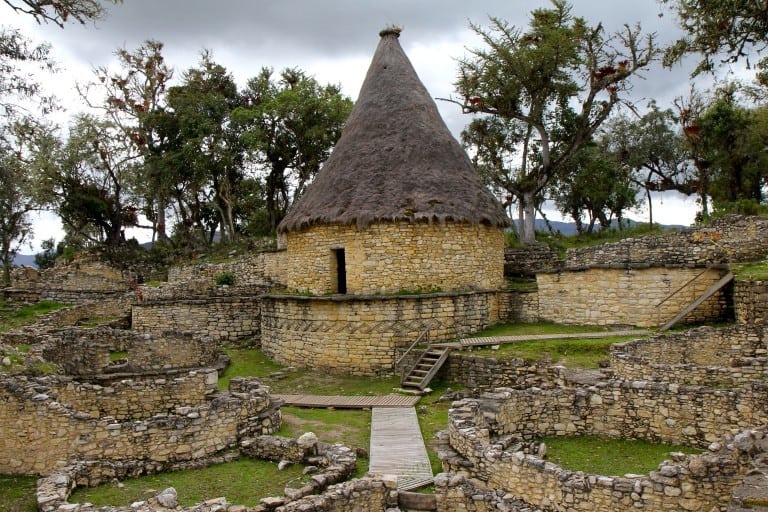
Kuelap – Home of The Cloud People
Kuelap is a unique, mountain-top walled fortress, located far away from the well-beaten Peruvian tourist track and is another alternative to Machu Picchu. It is considered one of the most important ruins in all of the Americas.
Situated outside the town of Chachapoyas, Kuelap is home to the “Cloud People” or the “Cloud Warriors” as the Inca called them. They live in the cloud-covered, subtropical forests on the eastern slopes of the Andes mountains in northern Peru.
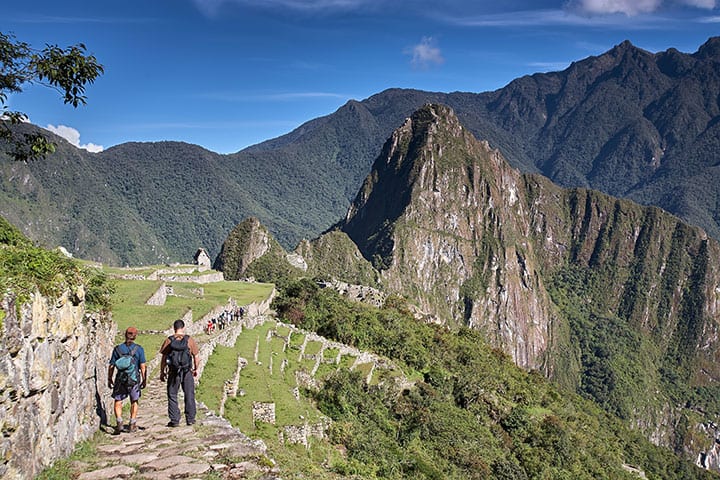
One day Inca trail hike + Machu Picchu experience
Hike part of the Inca Trail, pass through the Sun Gate, enjoy Peruvian cuisine and sleep in a comfy bed before your once in a life-time Machu Picchu visit!
Kuelap is located at an altitude of 3,000 m (9,842 ft) and features three levels which have about 550 unusual round stone structures that were built between 400 BC and 1470 AD. An interesting find during excavations were the blonde, pre-Inca mummies.
In 2017, a cable car line was established to make access much easier. Previously there was the option of a one-and-a-half-hour car ride up winding mountain roads, or a grueling four-hour uphill hike on steep and poorly-maintained paths.
Hike the Kuelap mountain
The hike to Kuelap is another interesting alternative trek well worth considering. It is a very affordable hike and there are certainly no crowds to deal with. The unique cloud forest ecosystem provides plenty of interesting wildlife, magnificent mountain vistas, and stunning waterfalls.
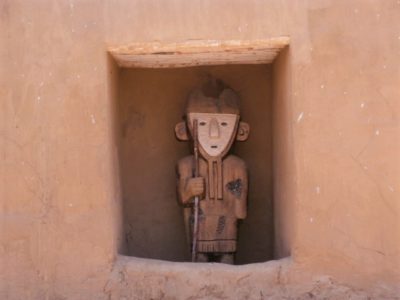
Chan Chan – The Largest Adobe City In The World
Another excellent Machu Picchu alternative is Chan Chan with its fascinating history. Chan Chan is usually translated as “sun sun” in the Quingnam language, spoken by the pre-Columbian Chimú civilization.
The Chimú civilization, the greatest American Empire prior to the Incas, reigned from 900 to 1470, and Chan Chan was their capital. The empire was defeated and incorporated into the Inca Empire.
The walled archaeological site of Chan Chan covers 36 square miles and is located on the coastal desert on the North Coast of Peru between the Pacific Ocean and the city of Trujillo.
It is the largest adobe (mud brick) city in the world but its existence is threatened today with climate change and the effects of El Niño, which creates the heavy rains and humidity which are detrimental to the mud-brick structures.
The adobe complex at Chan Chan contains ten high honeycomb-like walled complexes that were the palaces of the Chimu kings with their extravagant citadels, temples, plazas and cemeteries. It is possible to visit the partially restored Tschudi Palace. The decorative adobe wall reliefs with their geometric patterns and images of local flora and fauna are simply captivating.
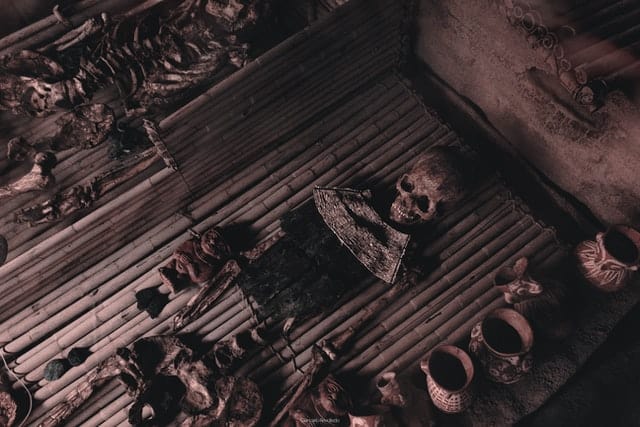
Sipan, Peru’s King Tut
The Lord of Sipan’s tomb was the first royal burial site found intact and untouched by thieves in South America. It belonged to a Peruvian civilization prior to the Inca Empire, and is considered to be one of the most important archaeological discoveries in South America in the last 30 years.
The tombs, known as the Moche tombs, were excavated at Huaca Rajada, Sipán in northern Peru, near the city of Chiclayo.
The Lord of Sipán was an ancient Mochica ruler from the 3rd century, and one of the most powerful men in ancient Peru. He was interred with 451 objects of gold, silver, copper, and turquoise and at the Sipán Archaeological Complex and its on-site museum, you will be able to see the well-preserved and impressive ornaments with which the tomb was adorned.
The Sipán Museum of Royal Tombs in the nearby town of Lambayeque also showcases a number of other relics, including the actual skeletal remains of the tomb’s inhabitants and some beautiful pottery.
A trip to Sipan is definitely worth keeping in mind as another fascinating alternative to Machu Picchu.
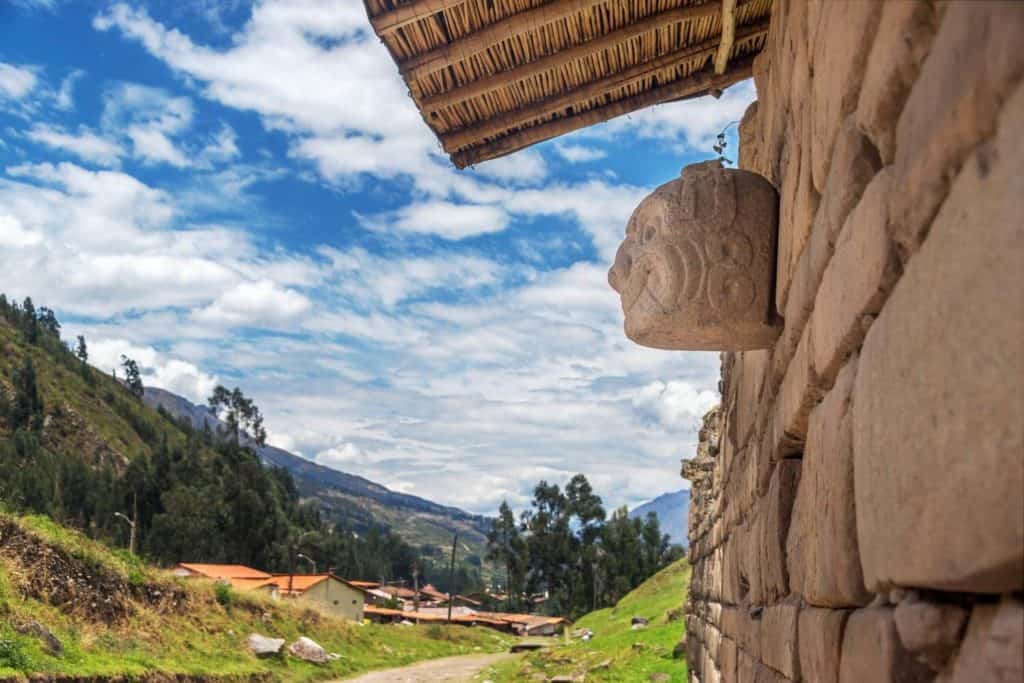
Chavín De Huantar – A 3000-year-old Temple from the Oldest Culture In Peru
Like Machu Picchu, the Chavín de Huantar temple is a World Heritage Site. It lies in a narrow valley in the northern Andean highlands at 3,200 meters above sea level. The Chavín people are considered to be the oldest major culture in Peru and influenced later civilizations such as the Incas who arrived about 2000 years later.
The Chavín de Huantar temple was an important religious pilgrimage site and features narrow tunnels and many impressive engravings.
There is a large central square, which is just below ground level, and archeologists are amazed at the sophisticated system of channels for drainage that were constructed to avoid the temples being flooded and destroyed during the rainy season. There are many underground chambers.
From the square, a wide staircase goes up to a large pyramid structure called the Castilla and in the center of the underground complex is the most important relic of the Chavín religion: a 5m-high carved granite monolith called the lanzón (the lance). The lance depicts the most important deities worshipped by the Chavín culture: the Serpent, the Condor, and the Feline (jaguar or puma).
The temple was an important pilgrimage site and is located a few hours’ drive from the popular northern Peruvian city of Huaráz.
Machu Picchu Alternatives: Inca Ruins in the Sacred Valley
The Sacred Valley is the main corridor between Cusco and Machu Picchu. It stretches for 100 km from Pisac, which is 20 km from Cusco, to the citadel at Machu Picchu and is dotted with a host of Inca landmarks, fascinating ruins and impressive landscapes.
The ruins along the route are smaller than Machu Picchu and more dispersed but every bit as fascinating. The Sacred Valley offers a host of excellent Machu Picchu alternatives; purchase the boleto turístico (tourist ticket) and get access to 16 Inca ruins in the Sacred Valley that you can visit within a period of 10 days.
Here are some of our recommendations.
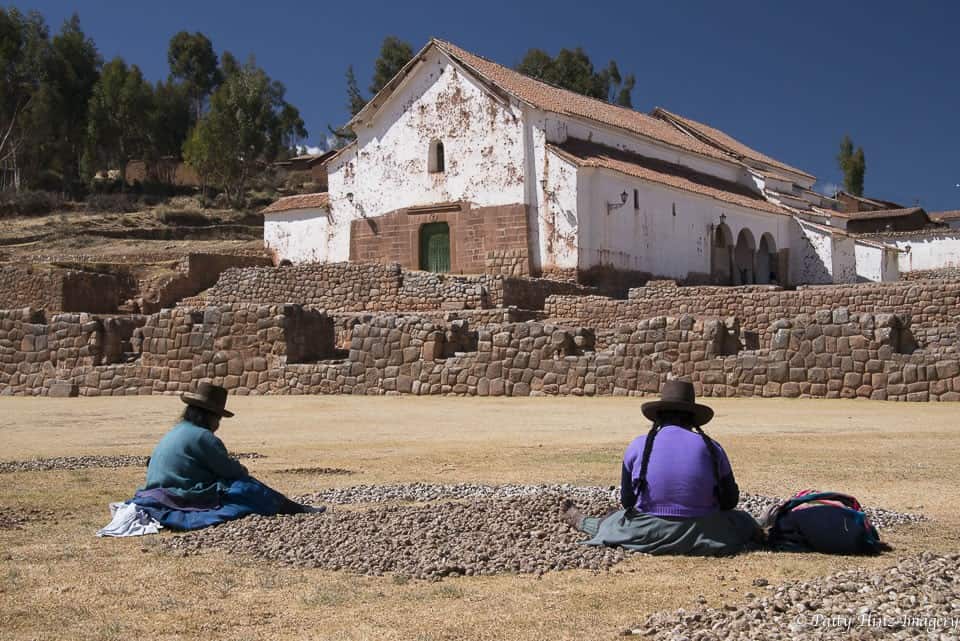
Chinchero, the Birthplace of the Rainbow
The village of Chinchero was thought to be a summer resort for the Inca royalty as a place for them to relax and reenergize to rule the Inca Empire. The palace was on the top of the hill in Chinchero but was destroyed by the Spaniards.
On the palace site, natives built a colonial adobe church with an ornately painted interior. Stone walls, aqueducts, and a series of terraces for farming that are still in use today lead down from the church. From the terraces are beautiful views of snow-capped mountains and expansive fields.
The Inca people believed that Chinchero was the birthplace of the rainbow. There are amazing pink rocks with carved steps and a variety of different carved shapes and there is a short trail that leads to a waterfall. It is a place to enjoy not only exploring the ruins but the natural wonders too!
If you happen to be visiting on a Sunday there is a large market In Chinchero. You can also see a demonstration of traditional weaving at one of the touristic awana wasi weaving houses if you visit Chinchero.
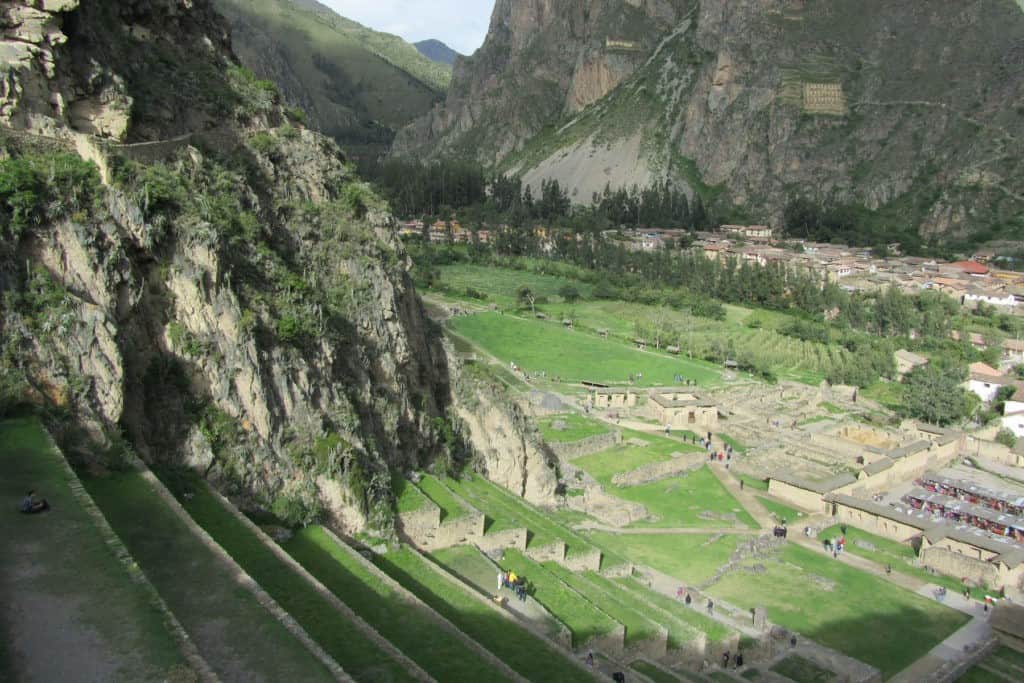
Ollantaytambo, the “Living Inca Village”
Ollantaytambo has been continuously inhabited since the 13th century and is surrounded by mountains in every direction. It is the starting point for those hikers doing the Inca Trail trek and is the main station for catching the train to Machu Picchu.
Walking through the town you will pass by Inca, colonial and modern structures, and on the outskirts of Ollantaytambo, you will see beautiful waterfalls and an impressive lagoon.
Ollantaytambo was the only place in Peru that defeated the Spanish army and managed to hold them back successfully until the Spanish finally returned with more forces, but they did not stay for long and mostly left the fortress untouched.
Explore the greatness of Ollantaytambo
There are 200 large steps to conquer to reach the Ollantaytambo ruins with its Temple of the Sun and fortress. There is an incredible view of the town below and the river valley from the top of the ruins.
A large part of the city’s original Inca walls remain intact, and many of the rocks that form the terrace walls are the size of three or four people and came from a quarry on the other side of the valley, approximately 5 kilometers away. It must have been an incredible feat of construction!
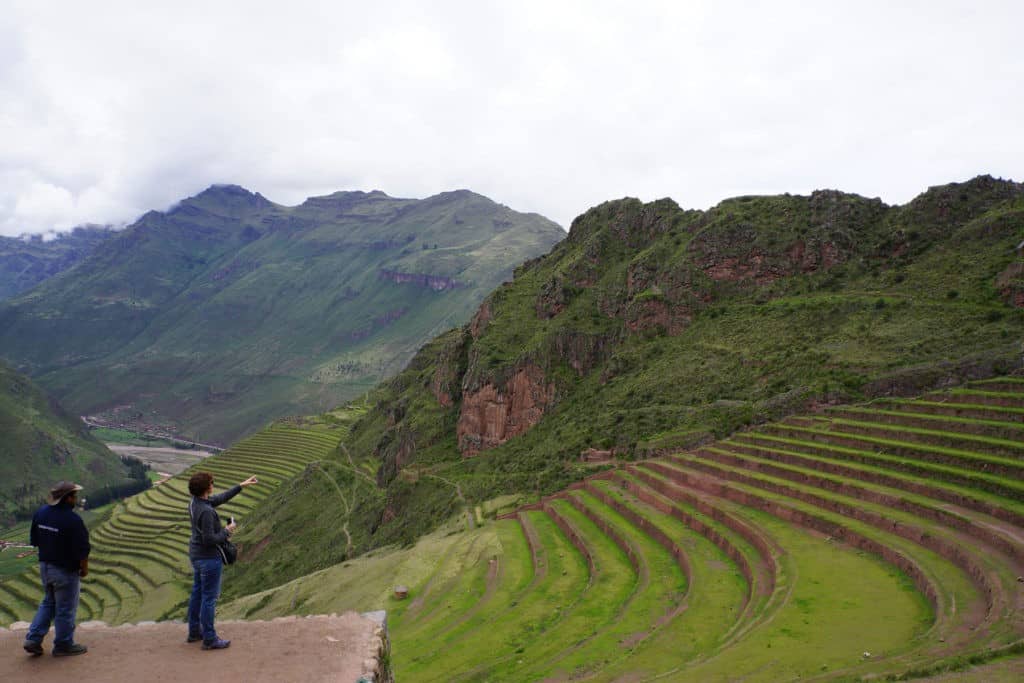
Pisac: A Sun Temple Made of Pink Granite
Pisac is an entire mountain with terraces at the western end of the Sacred Valley. This is one of the most spectacular and best-preserved ancient Inca sites. The word Pisac means “partridge” and the archaeological ruins portray the shape of a bird, which is visible from the air.
The Pisac Ruins sit up on the hill above Pisac town and overlook the Sacred Valley. They protected Cusco from possible attacks. The stunning Sun Temple’s construction consists of pink granite with ceremonial altars, water channels, and wells.
Pisac was an important trading post, temple for the sun, and agricultural hub and there are countless mountainside graves. There are some holes on the rock, resembling nests for birds along the mountain cliffs but these are Inca graves. As part of a tradition when people died, the Incas buried them in the fetal position so they could return back to Mother Earth.
Visit Ollantaytambo, Pisac and Chinchero on our Classic Sacred Valley Tour. This is a great alternative to Machu Picchu if you’re short on time, but it’s also a nice complement to the more famous Inca ruins.
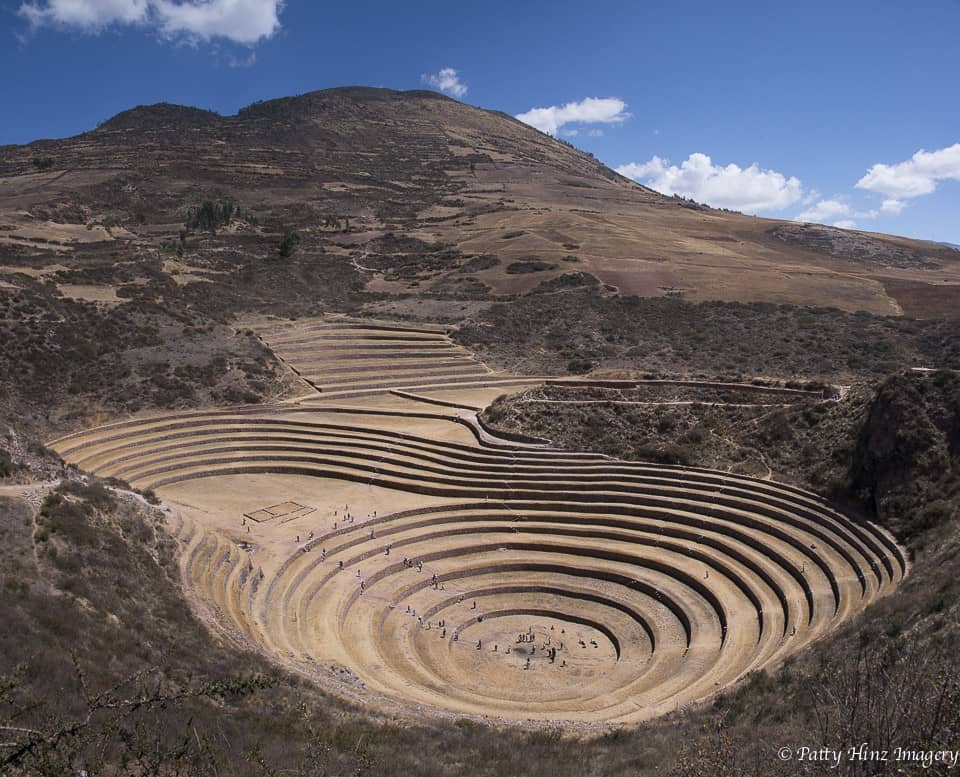
The Ruins at Moray: An Inca Agricultural Laboratory
The ruins look just like an amphitheater with its distinctive circular-shaped terraces! However, some believe that the design of the ruins helped in agricultural experiments.
The Incas were brilliant with agriculture and plant cultivation. Each step or level of the terrace has a different temperature and they used to dig on the terraces to a level of about 100 feet so the temperatures varied about 15 degrees from the top to the bottom.
At the top, they could grow high-altitude plants like potatoes and at the bottom levels, more tropical fruit and vegetables which they used for different experiments. The goal was to know which level best suited which plants.
Archaeologists also discovered that the soil on the terraces came from several different regions of Peru and although this area of Peru has flooding in the rainy season the Moray Ruins never flood!
Visit Moray – and the salineras at Maras – on our Maras Moray 1 day tour.
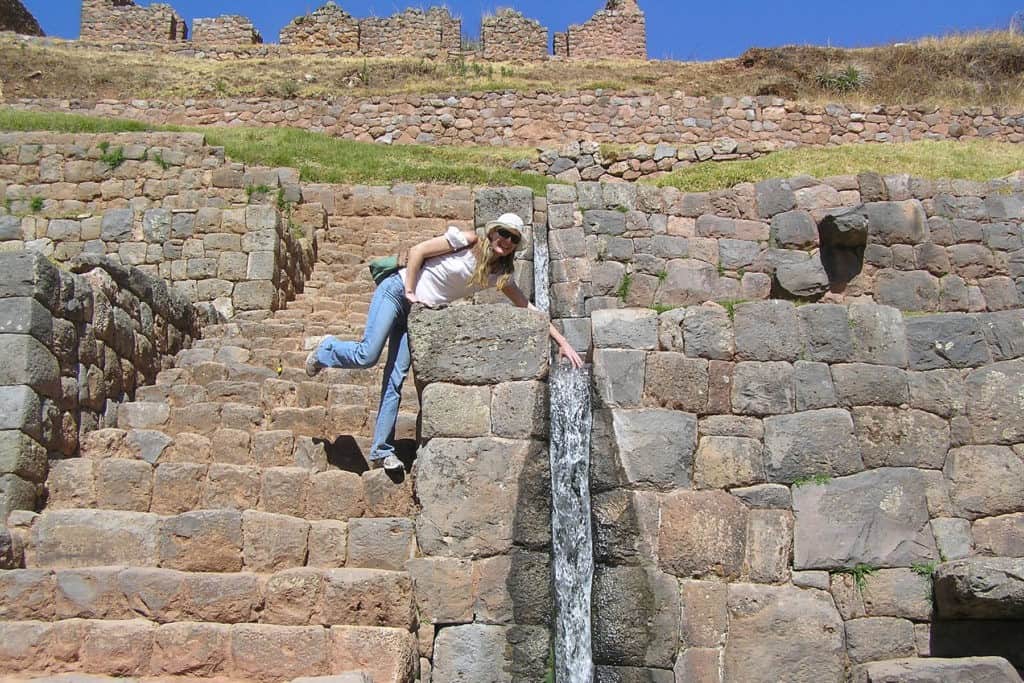
Machu Picchu Alternatives in Cusco’s South Valley: Tipón & Pikillaqta
There are more interesting Machu Picchu alternatives in the Cusco South Valley. This region has some less well-known archaeological sites that are still very impressive. First up is Tipón, a small farming village high in the hills that has impressive agricultural terracing and a well-preserved Inca irrigation system.
The very beautiful green grass terraces are full of stone water features and intricate channels. The main fountain is at the top of the 12 terraces, with two water channels representing the sun and moon transporting the water slowly downhill. These channels eventually become 4, representing the regions of the Inca empire – Tawantinsuyo.
The ruins at the top of Tipon were once a royal residence complete with VIP rooms, store buildings, and gardens. From here there are several walking trails, including one of the original Inca trails where you will come across more ruins, aqueducts, and temples.
Six kilometers past Tipon is Pikillaqta, which is one of the main cities of ancient Peru. The pre-Inca urban center of Pikillaqta was a provincial city from 650 to 900 A.D for the pre-Columbian Wari culture. The ruins are around 50 hectares with 10 hectares still under the process of excavation.
Pikillacta translates as “Flea City” and legend has it that there was once a Wari Queen who desperately wanted a permanent water supply. She had a couple of suitors and promised them that the first one to build her an aqueduct would have her hand in marriage.
However, the winner was unfortunately the suitor that the queen didn’t like, so she locked him in a room full of fleas and left him there to die!
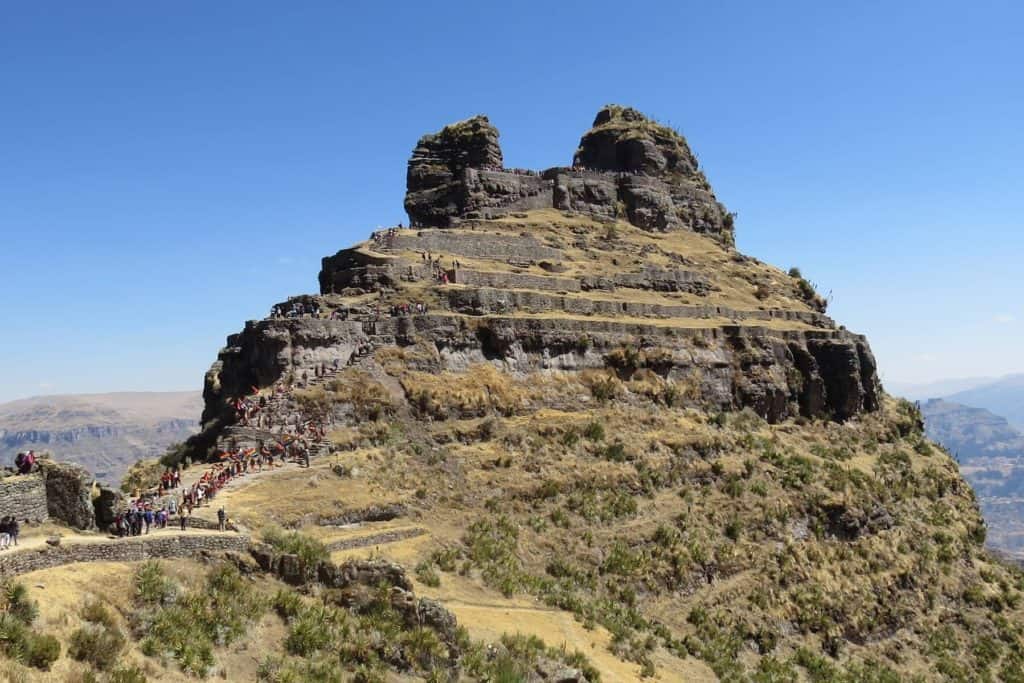
Waqrapukara: The Horned Fortress
For a unique Machu Picchu alternative, leave the standard tourist fare in the Sacred Valley and South Valley behind and head to Waqrapukara. Meaning “horn fortress” in Quechua, Waqrapukara sits atop a rocky outcrop in Cusco’s Acomayo province. A variety of trails lead you there over the course of one or two days, with time to admire how the fortress’s masonry seamlessly merges with the surrounding horn-shaped mountain peaks.
Meanwhile, archaeological research of the Waqrapukara ruins is still underway, leaving them somewhat shrouded in mystery, many people report special energy at this site. So, if you’re looking for a taste of Andean mysticism and a genuine connection to the ancient past, this site is a no-miss.
For more information, check out our blog post about our Waqrapukara experience!
Inca Ruins in Cusco: Another Alternative to Machu Picchu If You’re Short on Time
Whether you plan to visit Machu Picchu or one its alternatives, Cusco makes a great base for exploring the region. The oldest continuously inhabited city in the Americas and a UNESCO World Heritage Site, Cusco is full of churches, narrow cobblestone alleys, and spacious plazas – and some pretty fascinating ruins, too!
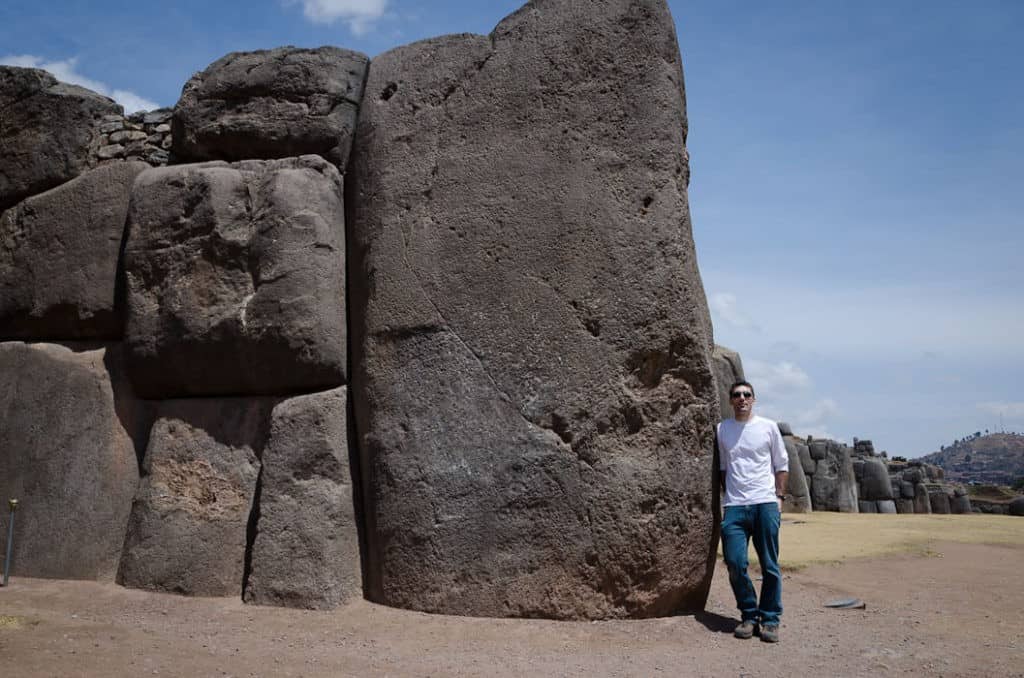
Sacsayhuaman & The “4 Ruins”
Sacsayhuaman was the most important military base of the Inca Empire and it’s compared in greatness with the Roman Colosseum. It is one of the finest examples of precision Inca stonework and architecture displaying walls built with giant stones. Some of these stones weigh more than 100 tons and fit together perfectly.
Qenqo is an archeological site that includes caverns, canals, and a semi-circular amphitheater-type structure that served as a religious ceremonial centre. The area of the ruins open to tourists is Big Qenqo (Hatun Q’enqo). One of its most famous buildings is the mysterious “sacrificial room” where communities probably carried out rituals with animal blood. Small Qenqo (Huchuy Q’enqo) is off-limits to visitors.
Just above Cusco city are four Incan ruins: Sacsayhuaman, Qenqo, Puca Pucara, and Tambomachay. Visit them all on this full-day tour from Cusco.
Puca Pucara is a site of military ruins. Its name means “red fortress” due to the red granite that is part of its construction. It seems that it was part of the defense of Cusco, in particular, and the Inca Empire, in general.
About 8 km from Cusco is Tambomachay. Also known as El Baño del Inca, “The Bath of the Inca,” this ceremonial stone bath features fountains that flow with spring water. Surprisingly, lots of small waterfalls and water fountains are still feeding water from the mountains after many centuries.
Alternative Treks to Machu Picchu
Certainly, there is so much more to trekking in Peru than Machu Picchu and the Inca Trail, with many alternative hikes and routes.
Although it is hands-down the most famous – and, just like Machu Picchu itself, also the busiest – the Inca Trail isn’t the only hike in the area, and there are any number of alternative routes to Machu Picchu.
The top Machu Picchu alternative treks include the Salkantay trek, and Lares trek, plus more great Inca Trail alternatives that don’t include Machu Picchu. Check out our blog for a full overview of all the best alternative Machu Picchu treks around Cusco
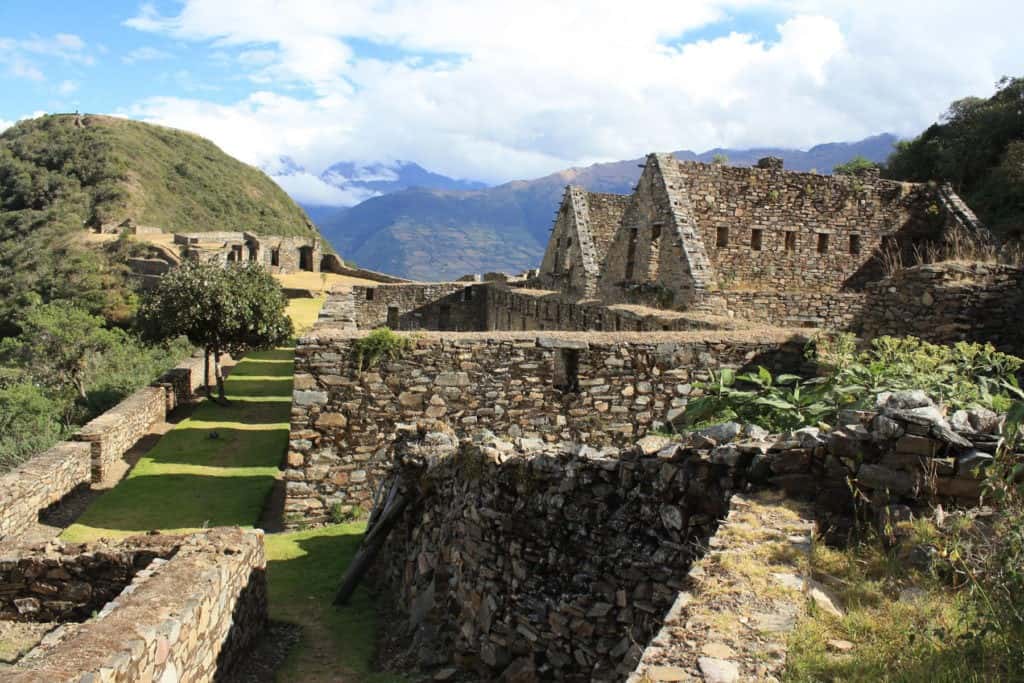
Choquequirao & Other Machu Picchu Alternatives: So Many Places to Visit in Peru!
As you can no doubt see from the information above, there are a great many fascinating alternatives to Machu Picchu. While you are in Peru try to visit as many of the sites as you can! Each one is unique and has its own interesting story. You will return home with many unforgettable memories!
Keep Reading:
Guide to Visiting Machu Picchu
Best Alternative Treks to Machu Picchu

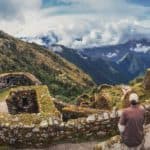
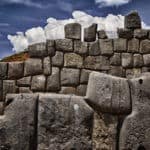
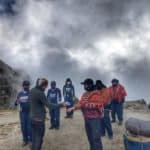




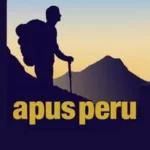

I was just talking with my friend today about alternatives to Macchu Picchu so this article was really helpful. We don’t want to hike so thanks for sharing all the alternatives including a great site accessible by cable car. I am sending it to her now so we can do some planning!